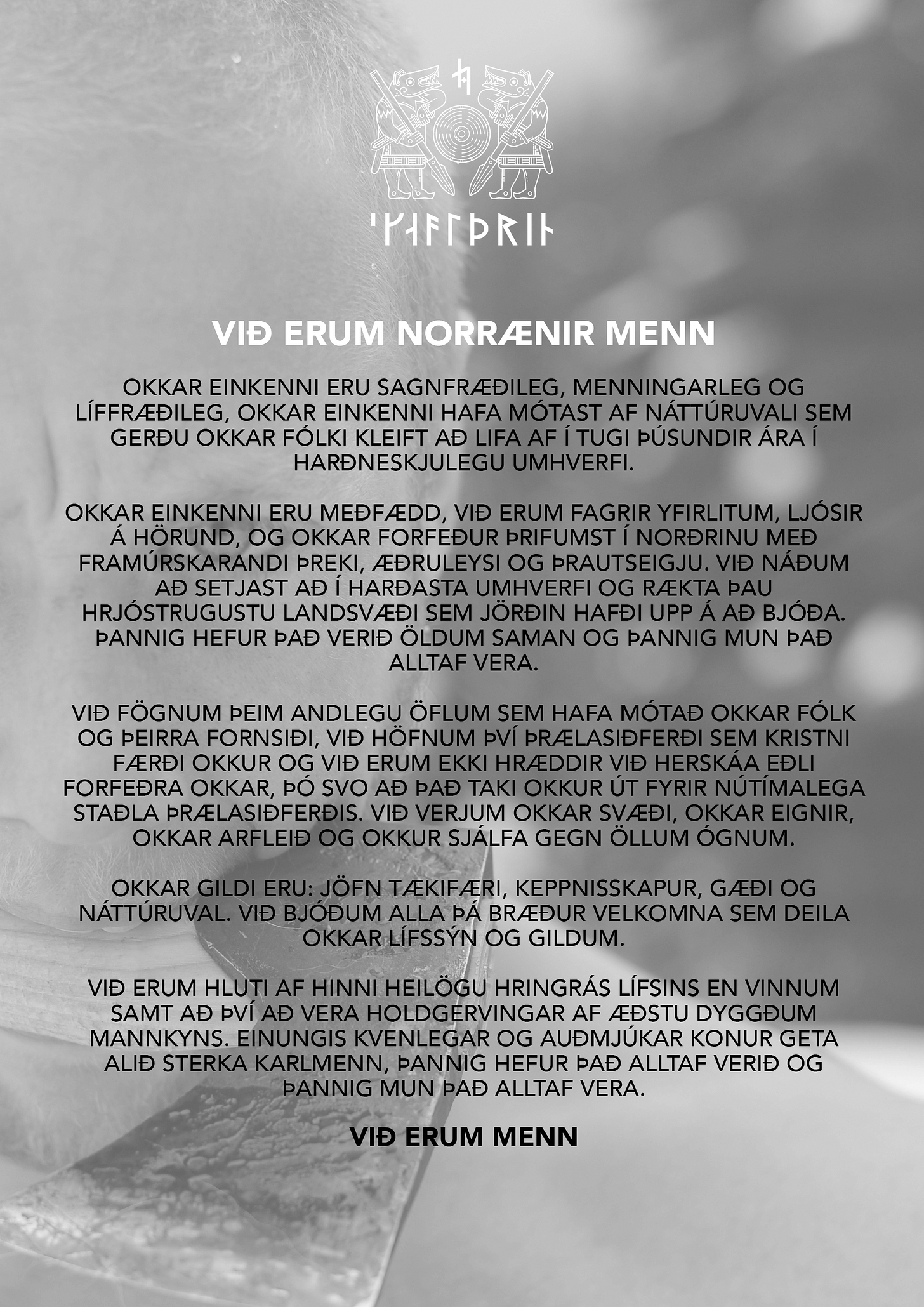Old Norse is NOT Icelandic
The differences in meaning, grammar, and context between Old and Modern Icelandic are significant.
The newest generation of Icelanders, generally, have lost the understanding that Old Norse (norrœnt mál, Gammel Norsk, or Old Icelandic) is different from modern Icelandic. Typically, they will see Old Norse terms as having the same meaning as the same modern Icelandic words, sometimes going even as far as seeing words spelled in Old Norse without the typical Icelandic "u" as incorrect (e.g. Víkingr singular/indefinite in Old Norse, Víkingur singular/indefinite in modern Icelandic).
This is problematic is it prevents the newest generation of Icelanders from gaining a full understanding of their ancestral cultural texts, one of the reasons some much revisionist ideas have been plaguing Norse culture lately.
Different meaning in Old Norse and modern Icelandic
Notwithstanding context, grammatical differences, style, and dialect, many words in Old Norse have a completely different meaning in modern Icelandic.
Here are a few significant examples:
Norðmenn
In Old Norse, it refers to "Norsemen", as in Nordic men from Scandinavia, and specifically including any dude from Norway, Denmark, Sweden. the Faroe Islands, or Iceland.
In modern Icelandic, however, "Norðmenn" is the term specifically used to refer to Norwegians. Not Norsemen in general, and not anyone who isn't from Norway. Instead, the term used for Nordic men or Scandinavians is "Norrænir menn".
As a result, if you look at Mannskapr, we use the Old Norse term "Norðmenn" in the English and Norwegian version to refer to Norsemen, but in the Icelandic version, we use Norrænir menn instead, because we knew that Icelanders would not be able to understand we were using the meaning of the Old Norse term, and would have understood it instead as Norwegians specifically, thereby feeling completely excluded.
This example shows you how critical it is to understand that Old Norse may be spelled very similarly to modern Icelandic, but is fundamentally different. Not surprising ultimately, as modern Icelandic has been evolving for over 1,200 years. Old Norse has not.
Matr
In modern Icelandic, it means food in general. In Old Norse, it means meat specifically. You can see here the significance of missing the actual authentic Old Norse meaning, leading to extrapolations by some that the Vikings were… Vegetarian.
Pakki
This is a more complex example that expresses very well the contextually of Norrœnt mál and the dialect variations.
In my book, Úlfheimr: The Tenth World, I refer to packs of wolf pups as “úlfhvelpapakkar” (pakkar being nominative indefinite plural, with pakki being nominative indefinite singular). In Icelandic, the meaning would be closer to a pack as a package/bundle, with the correct Icelandic term for a pack as it relates to wolves being “flokkur”.
In Old Norse, however, the term pakki has a different meaning. It combines both the aspect of a pack and a bundle, to express, almost with a poetic aspect, wolf pups being stuck together as a bunch, without the expected level of hierarchy and organization associated with a pack of adults.
In my third book of the trilogy, Úlfheimr: The Nordic Kingdom, I however use “Úlfaflokkar” to refer to a pack of wolves, adults this time. And even though the nominative indefinite singular, “Úlfaflokkr” is very similar to the Icelandic term for wolf pack, namely “Úlfaflokkur”, the meaning in Old Norse remains nonetheless different. Indeed, in addition to the concept of pack, as in organized group of wolves with a hierarchy, the term also has a martial connotation, as it is also being used to express a body or band of warriors.
Ultimately, not only is Norrœnt mál (Old Norse language) fundamentally different for modern Icelandic, even when words remain relatively similar, but the extent of how contextual the language is, especially with different dialects, makes it a language impossible to learn or translate online. Only full physical immersion with groups speaking the same or similar dialect, in the context of Norse lifestyle, can lead to any actual learning and mastery of the language.






